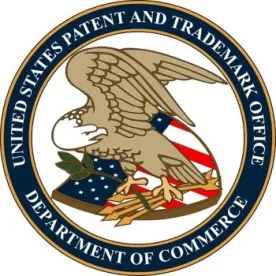This article is the first of three that will discuss the USPTO Patent Trial and Appeal Board (“Board”)’s use of Precedential Opinions as guidance when exercising discretion whether to institute petitions for post-grant proceedings, inter partes reviews (IPRs) and post-grant reviews (PGRs). In particular, this article addresses the precedential decision, Apple Inc. v. Fintiv, Inc.,[1] which outlines six factors for the Board to consider when denying a petition under 35 U.S.C. § 314(a) based on a parallel proceeding. The second article will discuss how the Board can exercise discretion to deny institution under § 325(d) if the petition relies on the same or similar prior art/arguments presented during examination, using the test outlined in Advanced Bionics LLC v. Med-EL Elektromedizinische Geräte GMBH.[2]The final article will address how the Board applies the factors from General Plastic Industries Co. v. Canon Kabushiki Kaisha in discretionary denials involving serial petitions.[3]
The Federal Circuit has stated that discretionary denials, like other institution decisions, are non-appealable under 35 U.S.C. § 314(d) and 324(e).[4] This means that the Board could exercise its discretion and deny petitions that it suggests may otherwise meritorious with little recourse for petitioners.[5]Regardless of whether practitioners agree with how the Board has exercised its discretion when deciding whether to institute petitions, practitioners should account for the current landscape when advising their clients and practicing before the Board.
Background:
The Administrative Procedure Act (“APA”) generally provides agencies with two ways to implement policies: rulemaking or adjudications.[6]The USPTO promulgates rules through notice-and-comment rulemaking and conducts adjudications through the Board.[7]
The Director can designate a Board decision as “informative” or “precedential” to provide Board panels with guidance on common or novel issues and promote consistency in decisions.[8]Precedential decisions establish binding authority on the Board concerning “major policy or procedural issues,” whereas informative decisions provide the Board “norms on recurring issues.”[9]There is also a Precedential Opinion Panel which “operates, at the discretion of the Director, to decide issues of exceptional importance to the Patent Trial and Appeal Board (e.g., issues involving agency policy or procedure).”[10] Precedential opinions have been used for years, but since the introduction of America Invents Act (“AIA”) and post-grant proceedings, the Director has designated more decisions as precedential at a rate greater than before.[11]
Apple Inc. v. Fintiv, Inc.
A recent hot topic has been the precedential decisions guiding the Board’s discretion on whether to institute petitions in different circumstances. For example, Apple Inc. v. Fintiv, Inc.[12]outlines six factors for determining whether to exercise discretion under NHK Spring Co. Ltd. v. Intri-Plex Technologies, Inc.[13]when there is a parallel proceeding in another venue. These factors, often referred to as “NHK-Fintiv factors,” include:
-
Whether the court granted a stay or evidence exists that one may be granted if a proceeding is instituted;
-
Proximity of the parallel venue’s trial date to the Board’s projected statutory deadline for a final written decision;
-
Investment in the parallel proceeding by the court and the parties;
-
Overlap between issues raised in the petition and in the parallel proceeding;
-
Whether the Petitioner and the defendant in the parallel proceeding are the same party; and
-
Other circumstances that impact the Board’s exercise of discretion, including the merits.[14]
Since designating Fintiv precedential in May 2020, the Board’s institution rate has dropped: for FY2019 the USPTO reports an institution rate of 63% and for FY2020 an institution rate of 56%.[15] Some believe this is due to an increase in discretionary denials.[16]The Board has even found the NHK-Fintiv factors favor denying petitions, even where it indicated that it was “more likely than not that Petitioner would prevail with respect to at least one of the claims challenged in the Petition” when other factors weighed in favor of denial.[17]
Petitioners have unsuccessfully attempted to challenge decisions to deny institution based on the NHK-Fintiv factors at the Federal Circuit. For example, in Mylan Laboratories Ltd. v. Janssen Pharmaceutica, N.V., the Federal Circuit held that given “the statute’s bestowal of discretion [35 U.S.C. § 314(d)] on the Director combined with its prohibition on appeal of such decisions, . . . there is no reviewability of the Director’s exercise of his discretion to deny institution except for colorable constitutional claims.”[18]Cases like Mylan, however, considered only whether denial was proper, not whether the USPTO had the authority to or properly enacted policy through the use of precedential decisions. Indeed, even when the Federal Circuit has had the opportunity to address the latter question, it has avoided answering it.[19]However, the Federal Circuit may not be able to avoid this question for much longer.
Several companies have sued the USPTO, alleging that the NHK-Fintiv rule is an abuse of the agency’s discretion because the factors are vague and malleable.[20]In Apple Inc. v. Iancu,[21]instead of challenging specific decisions denying institution, plaintiffs challenged the administrative framework of the Board’s precedential opinions. The Complaint alleges that 1) applying the NHK-Fintiv factors violates the AIA, which allows parallel proceedings to occur at the Board and the District Court; 2) the NHK-Fintiv factors are arbitrary and capricious because they lead to “speculative, unpredictable, and unfair outcomes;” and 3) the NHK-Fintiv factors are procedurally invalid because they were not adopted through notice-and-comment rulemaking.[22]Plaintiffs have filed a motion for summary judgment based on these pleadings, and the government filed a motion to dismiss, asserting that plaintiffs lacked a redressable injury to provide them with standing.[23]On March 11, 2021, the district court conducted oral arguments on the motions, a decision may issue soon. If the court finds that plaintiffs have standing, then it will be able to address the merits of the case. Given the issues, however, an appeal could be likely regardless of the district court’s decision.
Rulemaking
In October 2020, the USPTO requested comments on whether it should promulgate rules regarding its institution frameworks.[24]The Office received over 800 comments.[25] Some comments stated that the Board should not be able to deny petitions based on non-statutory grounds (e.g., based on parallel proceedings),[26]whereas others commented that, if the Office is going to implement these factors, it should do so through rulemaking.[27]It will be up to the new director of the USPTO to consider the comments and decide whether to promulgate rules or not.
Take-Away:
Until these issues are decided, the Board continues to apply the NHK-Fintiv factors. Therefore, for now, parties should prepare petitions and respond to petitions with the factors in mind. However, the long-term applicability of this framework is unknown because it could change through rulemaking, a court decision such as in Apple v. Iancu (and any subsequent appeals), or even legislative intervention.
In the next articles, we will discuss precedential decisions in other discretionary denial contexts: Advanced Bionics LLC v. Med-EL Elektromedizinische Geräte GMBH[28] and how the Board applies discretion to deny petitions based on substantially similar prior art under § 325(d); and the seven-factor framework in General Plastic Industries Co. v. Canon Kabushiki Kaisha,[29]which the Board applies to deny serial petitions under §314(a).
*Stacy Lewis, a Law Clerk at Finnegan, contributed to this article.
[1] IPR2020-00019, Paper 11 (P.T.A.B. Mar. 20, 2020) (precedential).
[2] IPR2019-01469, Paper 6 (P.T.A.B. Feb. 13, 2020) (precedential).
[3] IPR2016-01357, Paper 19 (P.T.A.B. Sept. 6, 2017) (precedential).
[4] Mylan Labs. Ltd. v. Janssen Pharmaceutica, N.V., 989 F.3d 1375, ____ (Fed. Cir. 2021) (“While there is no avenue for direct appeal of decisions denying institution, we conclude that judicial review is available in extraordinary circumstances by petition for mandamus.”); Cuozzo Speed Techs., LLC v. Lee, 136 S. Ct. 2131, 2140 (2016) (the Board has unreviewable statutory discretion whether to deny or institute a petition).
[5] See, e.g., Apple Inc. v. Pinn, Inc., PGR2020-00066, Paper 16 at 21 (P.T.A.B. Dec. 8, 2020).
[6] See generally 5 U.S.C. §§ 551–79 (2012) (codifying and defining the authority and scope of administrative agencies’ policymaking powers); Jeffrey J. Rachlinski, Rulemaking Versus Adjudication: A Psychological Perspective, 32 FLA. ST. U.L. REV. 529, 529–30 (2005).
[7] See, e.g., 35 U.S.C. §§ 6, 316.
[8] USPTO, Standard Operating Procedure 2 (Revision 10), https://www.uspto.gov/sites/default/files/documents/SOP2%20R10%20FINAL.pdf.
[9] USPTO, Precedential and Informative Decisions, https://www.uspto.gov/patents/ptab/precedential-informative-decisions (last accessed Apr. 26, 2021).
[10] Id.; See also, Standard Operating Procedure 2, supra note 8 (“The Precedential Opinion Panel generally will be used to establish binding agency authority concerning major policy or procedural issues, or other issues of exceptional importance in the limited situations where it is appropriate to create such binding agency authority through adjudication before the Board.”).
[11] See Precedential and Informative Decisions, supra note 9.
[12] IPR2020-00019, Paper 11 (P.T.A.B. Mar. 20, 2020) (designated precedential on May 5, 2020).
[13] IPR2018-00752, Paper 8 (P.T.A.B. Sept. 12, 2018) (designated precedential on May 7, 2019).
[14] Apple Inc. v. Fintiv, Inc., Paper 11 at 6.
[15] USPTO, Statistics FY14-FY21 to Date, https://www.uspto.gov/patents/ptab/statistics(Mar. 31, 2021).
[16] Unified Patents, PTAB Discretionary Denials Up 60%+ in 2020: Fueled Entirely by 314(a) Denials (Jan. 5, 2021), https://www.unifiedpatents.com/insights/2020-ptab-discretionary-denials-report
[17] Apple Inc. v. Pinn, Inc., PGR2020-00066, Paper 16 at 21 (P.T.A.B. Dec. 8, 2020).
[18] Mylan Laboratories Ltd. v. Janssen Pharmaceutica, N.V., No. 2021-1071, slip op. at 12 (Fed. Cir. Mar. 16, 2021). The Court also held that Mylan did not present a colorable constitutional claim for mandamus relief.
[19] See, e.g., Uniloc 2017 LLC v. Hulu, LLC, 966 F.3d 1295, 1307 n.5 (Fed. Cir. 2020); Aqua Prods. v. Matal, 872 F.3d 1290, 1319 (Fed. Cir. 2017) (en banc).
[20] Complaint at 18, Apple Inc. v. Iancu, No. 5:20-cv-06128-EJD (N.D. Cal. Aug. 31, 2020).
[21] No. 5:20-cv-06128-EJD (N.D. Cal. Aug. 31, 2020) (plaintiffs include: Apple Inc., Cisco Systems, Inc., Google LLC, and Intel Corp).
[22] Complaint at 2, Apple Inc. v. Iancu, No. 5:20-cv-06128-EJD (N.D. Cal. Aug. 31, 2020).
[23] Defendant’s Motion to Dismiss, Apple Inc. v. Iancu, No. 5:20-cv-06128-EJD (N.D. Cal. Nov. 23, 2020).
[24] Request for Comments on Discretion to Institute Trials Before the Patent Trial and Appeal Board, 85 Fed. Reg. 66502 (Oct. 20, 2020), https://www.uspto.gov/sites/default/files/documents/85_fr_66502_20201020.pdf.
[25] USPTO, Executive Summary of Public Views on Discretionary Institution on AIA Proceedings (Jan. 19, 2021), https://www.uspto.gov/sites/default/files/documents/USPTOExecutiveSummaryofPublicViewsonDiscretionaryInstitutiononAIAProceedingsJanuary2021.pdf.
[26] USPTO, Apple Comment on Discretion to Institute Trials Before the Patent Trial and Appeal Board (Dec. 3, 2020), https://www.uspto.gov/sites/default/files/documents/1232020AppleInc.pdf.
[27] See USPTO, AIPLA Comment on Discretion to Institute Trials Before the Patent Trial and Appeal Board (Dec. 3, 2020), https://www.uspto.gov/sites/default/files/documents/1232020AmericanIntellectualPropertyLawAssociation.pdf. See also, Additional Views by Judges PROST, Plager, O’Malley in Facebook, Inc. v. Windy City Innovations, LLC, 973 F.3d 1321, 1350 (Fed. Cir. 2020): “There is no indication in the statute that Congress either intended to delegate broad substantive rulemaking authority to the Director to interpret statutory provisions through POP opinions or intended him to engage in any rulemaking other than through the mechanism of prescribing regulations.”
[28] IPR2019-01469, Paper 6 (P.T.A.B. Feb. 13, 2020) (precedential)
[29] IPR2016-01357, Paper 19 (P.T.A.B. Sept. 6, 2017) (precedential),



 />i
/>i

